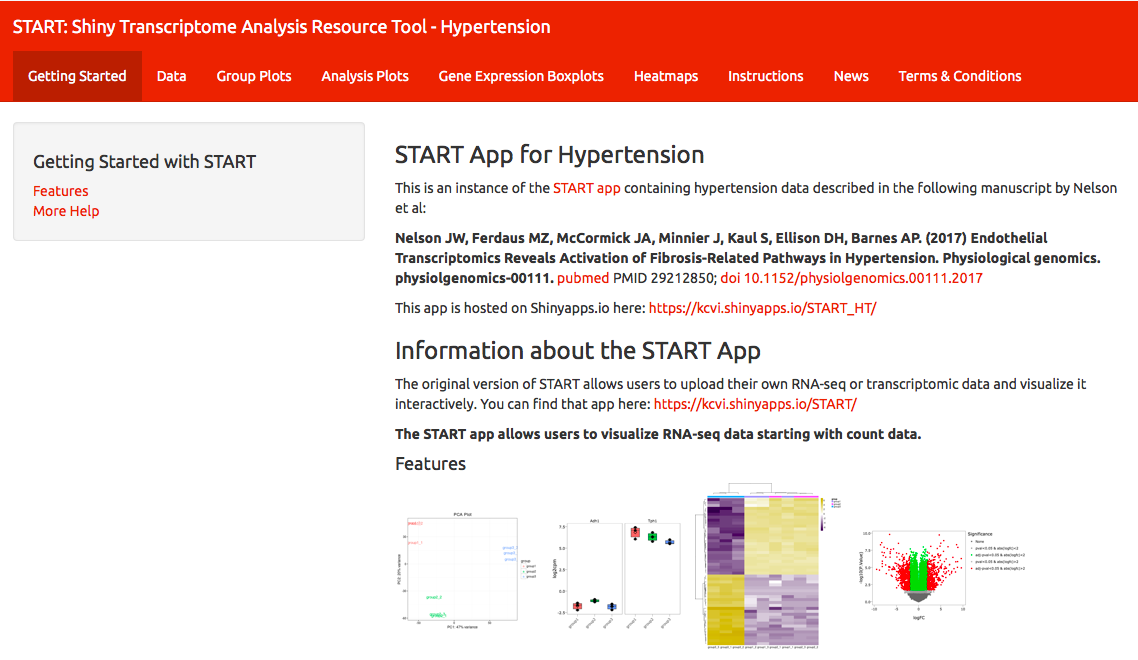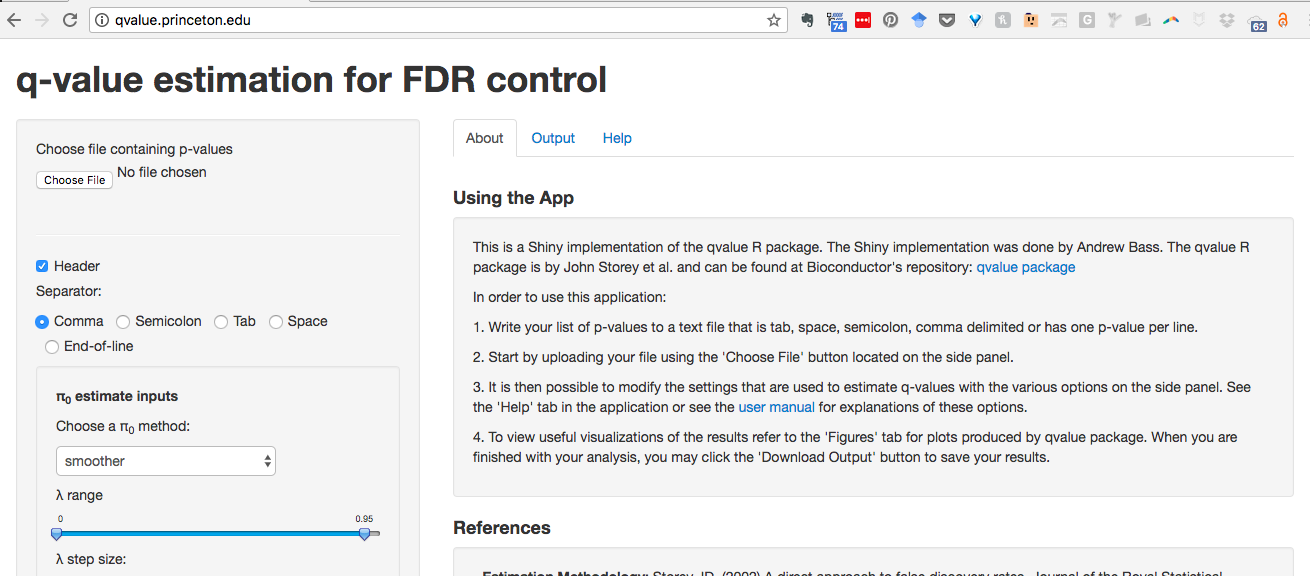Building Shiny Apps: With Great Power Comes Great Responsibility
CSP 2018
Jessica Minnier, PhD
Oregon Health & Science University
Twitter: @datapointier
Slides available at http://bit.ly/shiny-csp18
February 16, 2018
This talk:
1. Motivation & Uses
2. Considerations & Challenges
3. Responsibilities
4. Tips on Development
Why Shiny?
Motivation
Too many spreadsheets!
Motivation
"Can you make me this plot? Ok now this plot? Wait one more plot..."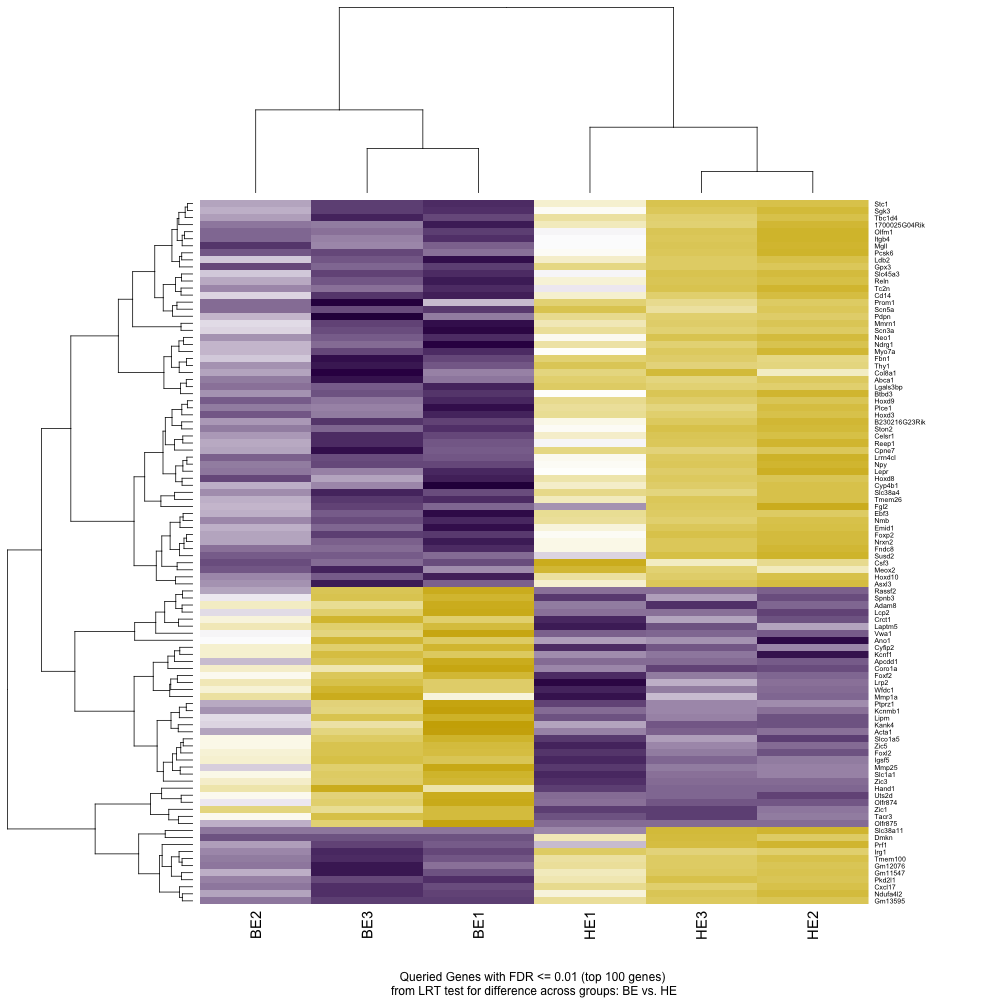
Motivation
Too many plots!
Enter, Shiny!
My motivation
(First step) Help collaborator: app to display one data set
- Explore, visualize, share data
- Generate hypotheses
(Now) Help everyone: general app for uploading/analyzing data sets
- Implement existing R tools to analyze data
- Explore, visualize, share data
- Generate hypotheses
Motivation For All:
Distribute your hard work!
Developer/Statistician/Data Scientist:
"How can I get people to use my new method/package?"
Developer/Statistician/Data Scientist:
Look at this analysis I did!
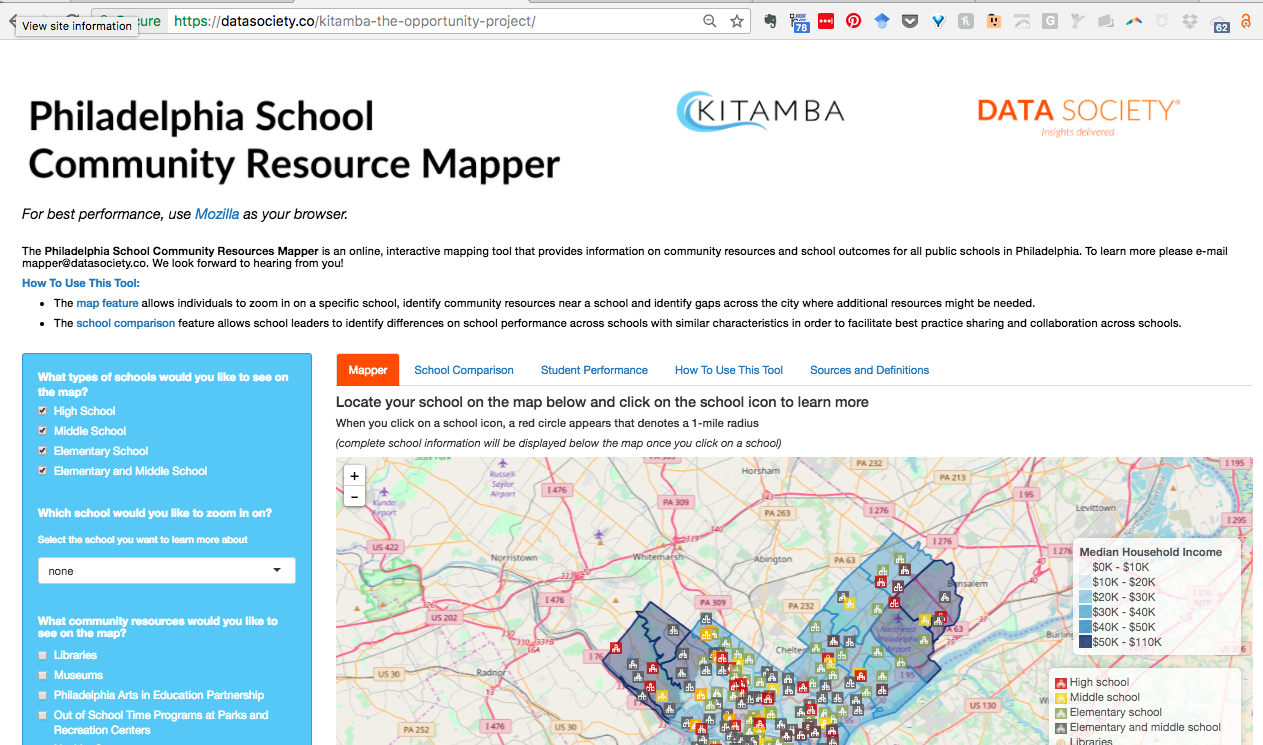 https://gallery.shinyapps.io/TSupplyDemand/
https://gallery.shinyapps.io/TSupplyDemand/
Shiny basics
# what you see, client sideui <- fluidPage()# computations here!server <- function(input, output) {}# run the app!shinyApp(ui = ui, server = server)Shiny basics
# what you see, client sideui <- fluidPage( # Title, panels plotOutput("myplot"), #from output$myplot selectInput("foo",choices=allthechoices))# computations here!server <- function(input, output) {}# run the app!shinyApp(ui = ui, server = server)Shiny basics
# what you see, client sideui <- fluidPage( # Title, panels plotOutput("myplot"), #from output$myplot selectInput("foo",choices=allthechoices))# computations here!server <- function(input, output) { # reactive plots output$myplot <- renderPlot({ ggplot(yay) + geom_point() }) # use input$foo here, maybe observe changes in UI observe({ dostuff(input$foo) })}# run the app!shinyApp(ui = ui, server = server)An example: START
Shiny Transcriptome Analysis Resource ToolGithub: [https://github.com/jminnier/STARTapp](https://github.com/jminnier/STARTapp)
DATA = RNA-seq gene expression
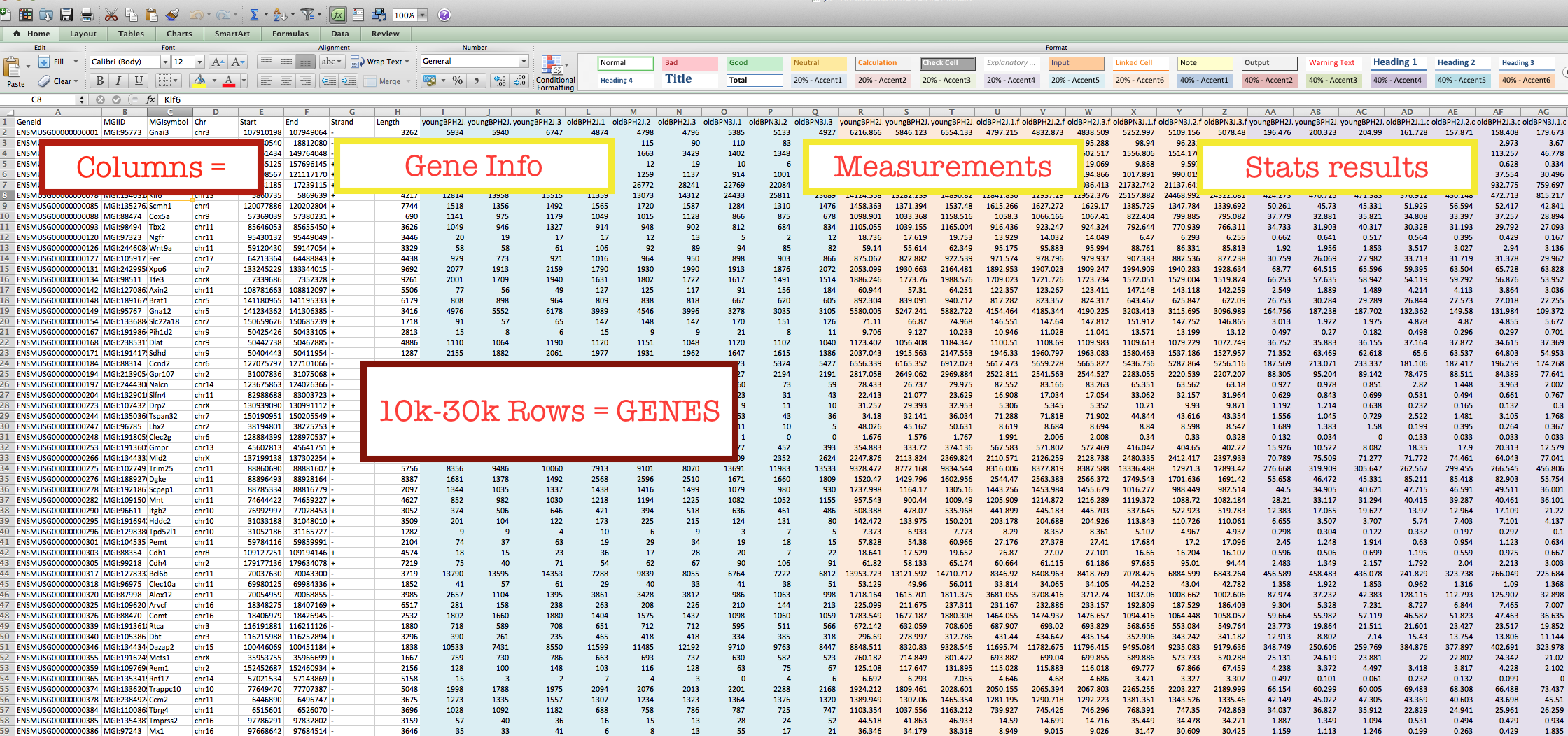
Very quick tour

Very quick tour
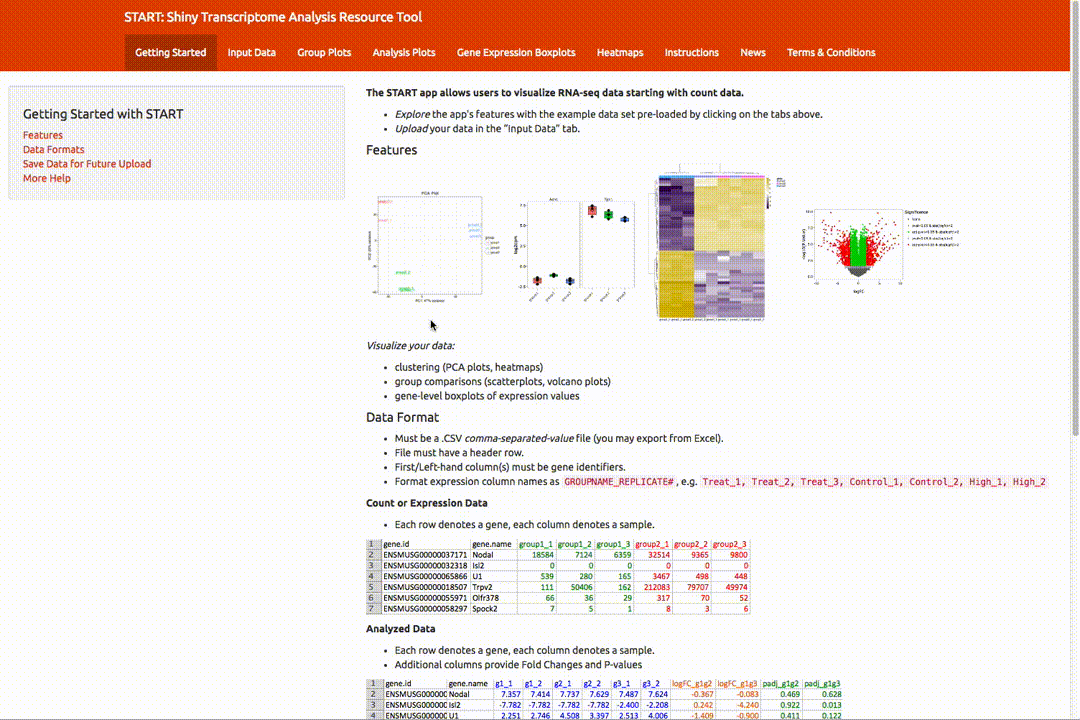
Data distributions, interactive

Analysis results, interactive
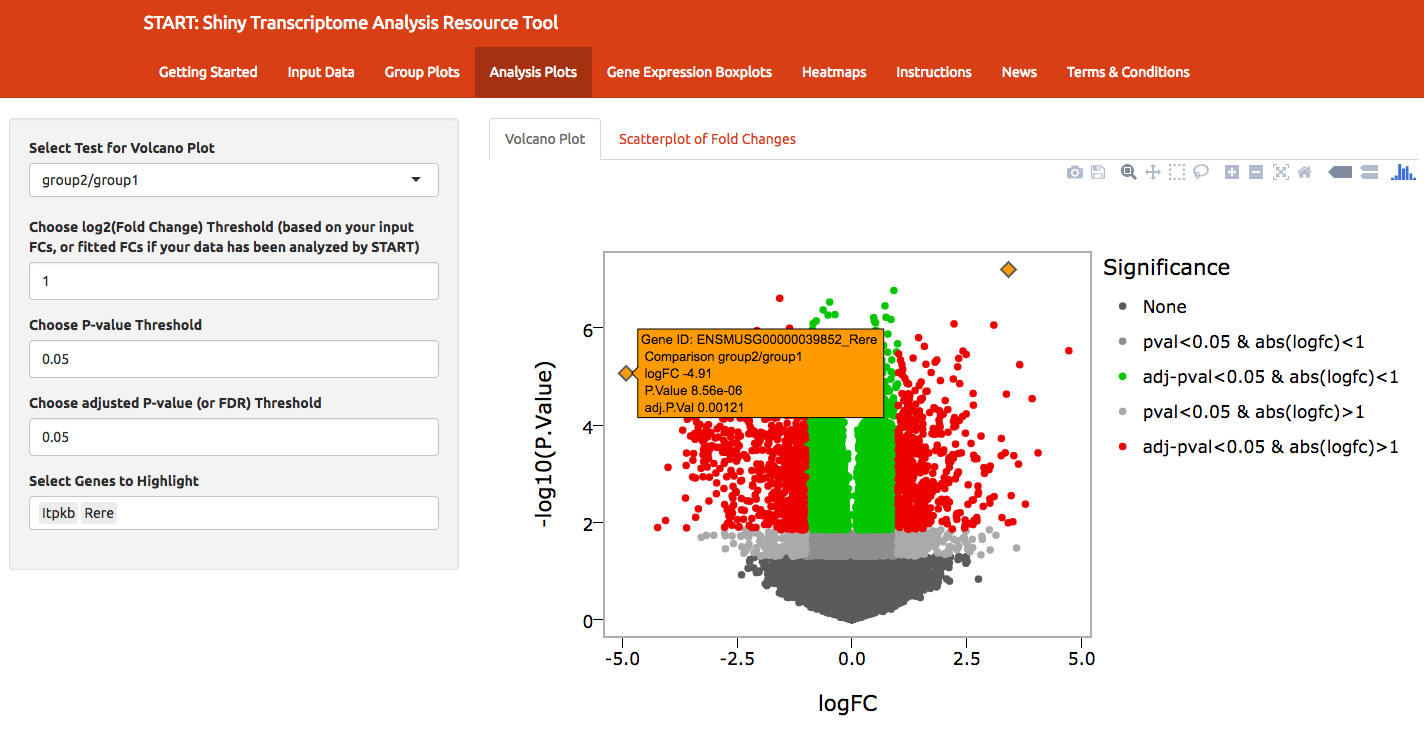
Data exploration, interactive
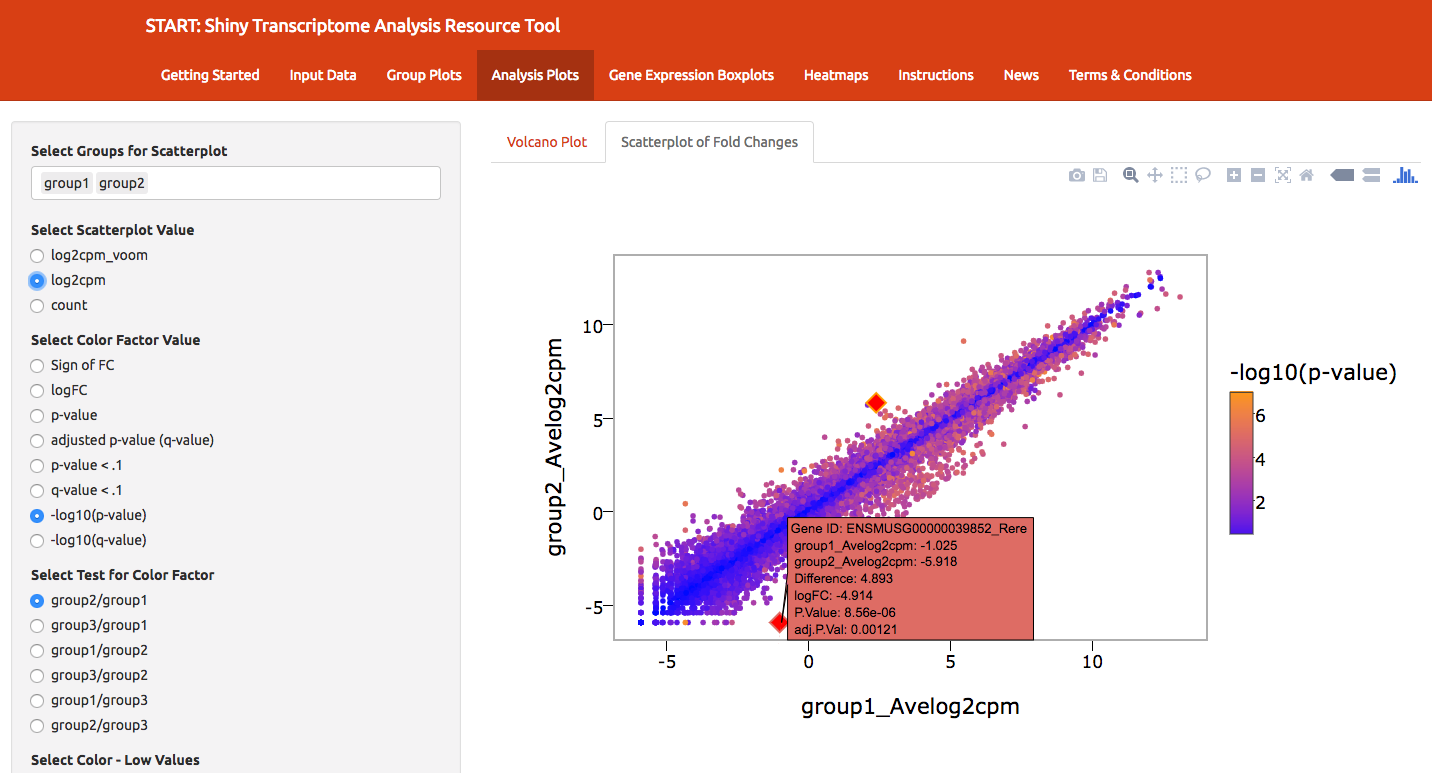
Considerations
Who is your audience?
Example: START app
- likely biologists
- may not be used to coding or large data sets

Challenges: User
Data is larger than they are used to + Cannot query or share results easilyInteractive search boxes/filtering + Reactive visualization
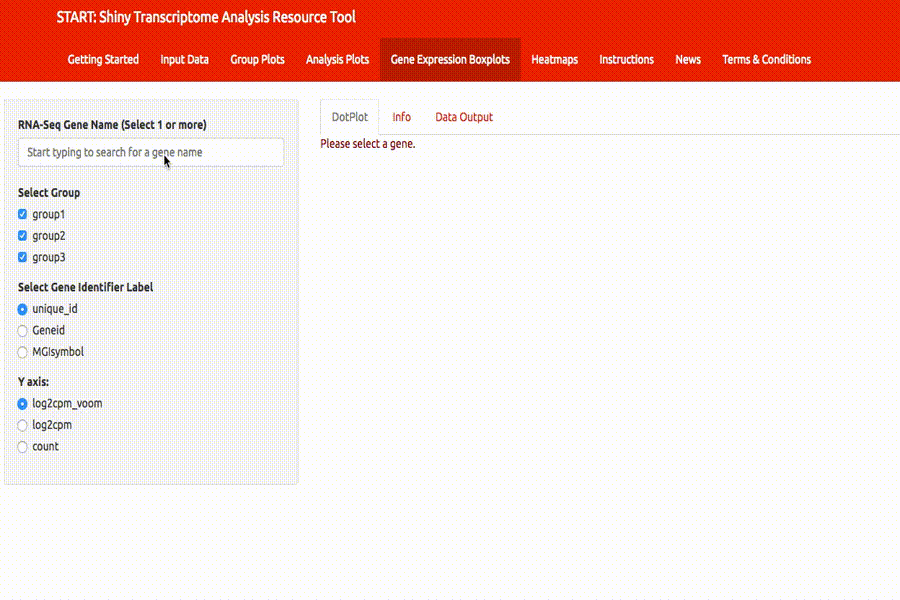
Challenges, Input/Ouput Data
- Input data ~ multiple formats: Special input formats
- Interface with other software? Export special formats
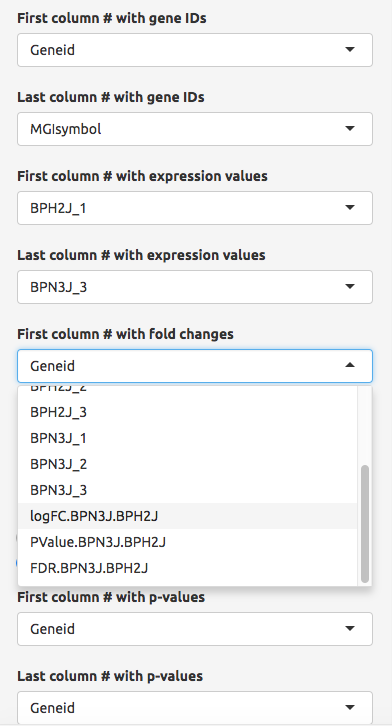
Challenges, Input/Ouput Data
- Input data ~ multiple formats: Special input formats
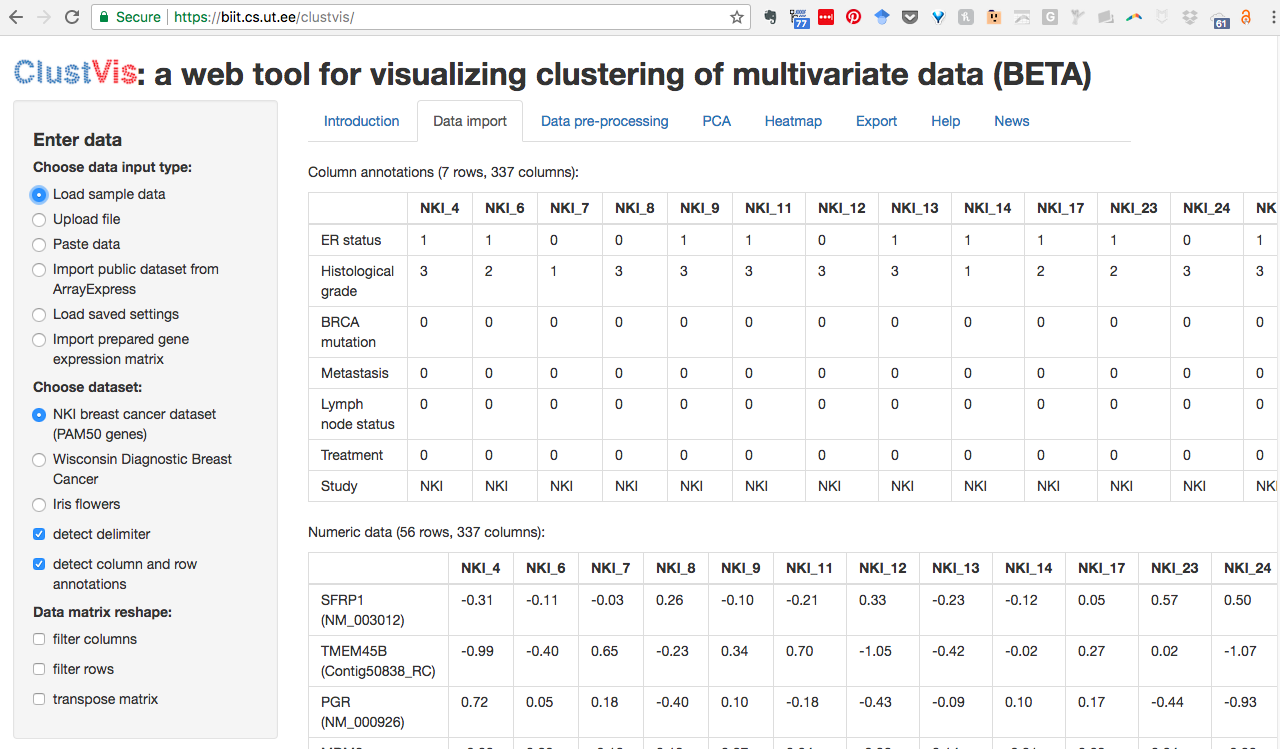 https://biit.cs.ut.ee/clustvis/
https://biit.cs.ut.ee/clustvis/
Challenges, Input/Ouput Data
- Input data ~ multiple formats: Special input formats
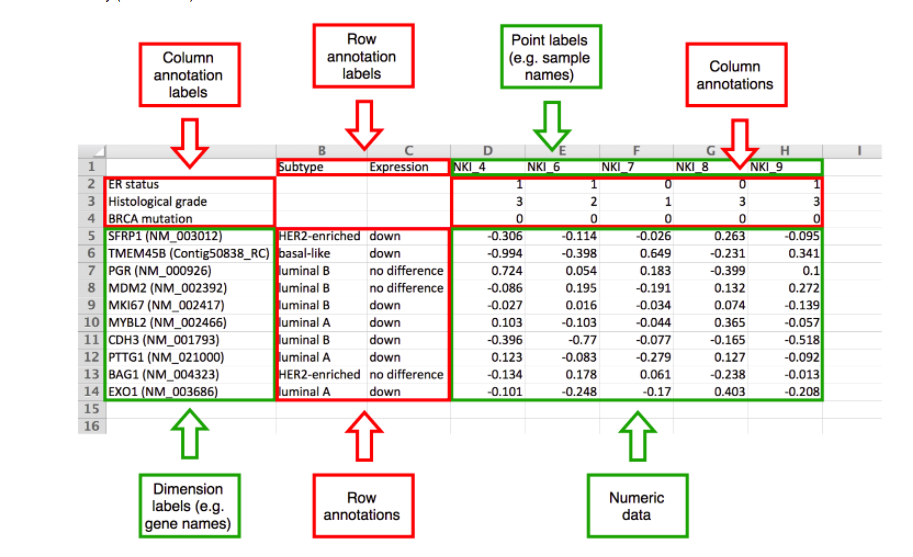 https://biit.cs.ut.ee/clustvis/
https://biit.cs.ut.ee/clustvis/
Challenges, Analysis
Many possible ways to analyze data:
- RNA-seq data has many analysis pipelines (edgeR, DESeq2, limma)
- Complex study designs
- repeated measures
- multiple pairwise comparisons vs overall group comparisons
- How to allow for so many possibilities?
Challenges, Analysis
Many possible ways to analyze data:
- RNA-seq data has many analysis pipelines (edgeR, DESeq2, limma)
- Complex study designs
- repeated measures
- multiple pairwise comparisons vs overall group comparisons
- How to allow for so many possibilities?
Balance flexibility/simplicity/CORRECTness
- Too many options
→high likelihood of incorrect use of analysis tools
Challenges, Analysis
Many possible ways to analyze data:
- Restrict analyses performed
- Allow for uploading of analysis results
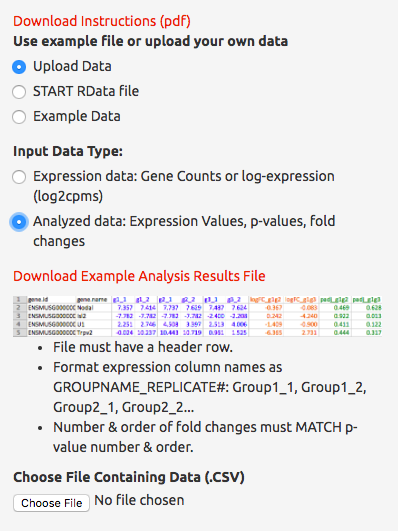
Challenges, Analysis
Look at the data! (QA/QC)
Challenges, Analysis: QA/QC
Present QA plots up front
https://github.com/joey711/shiny-phyloseq
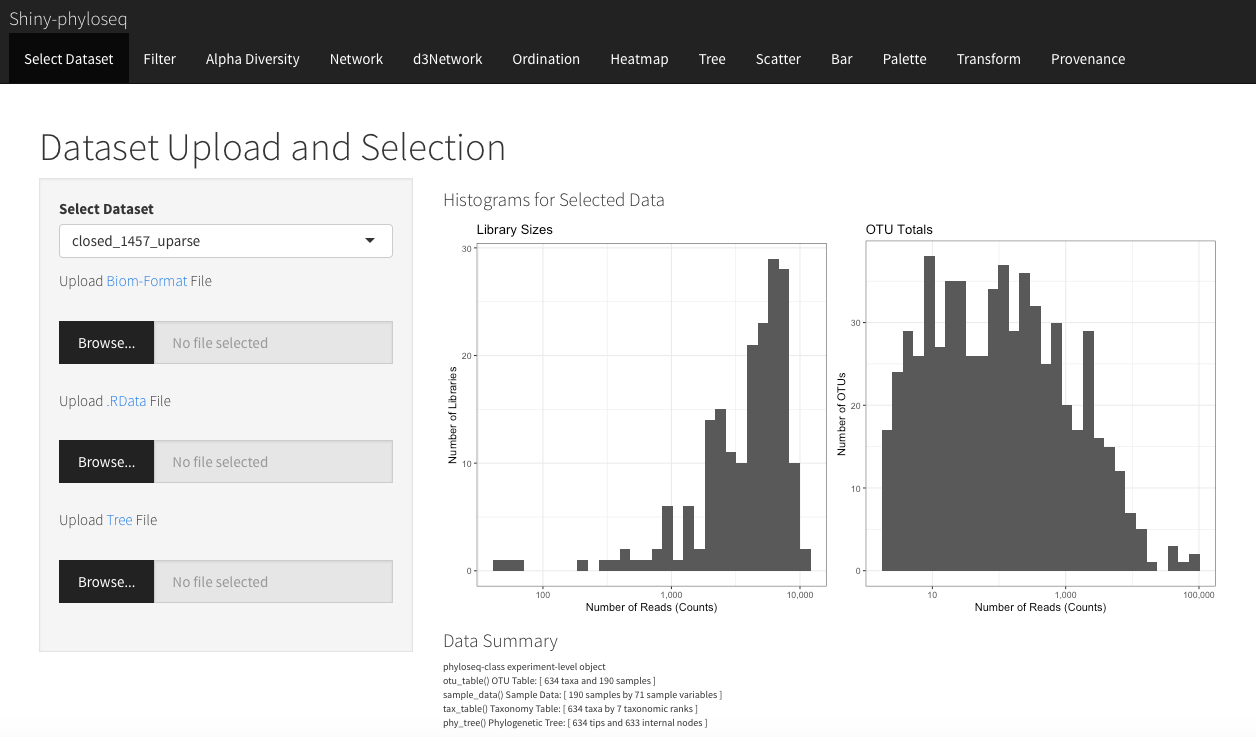
Challenges, Analysis: QA/QC
Does this data look "weird"?
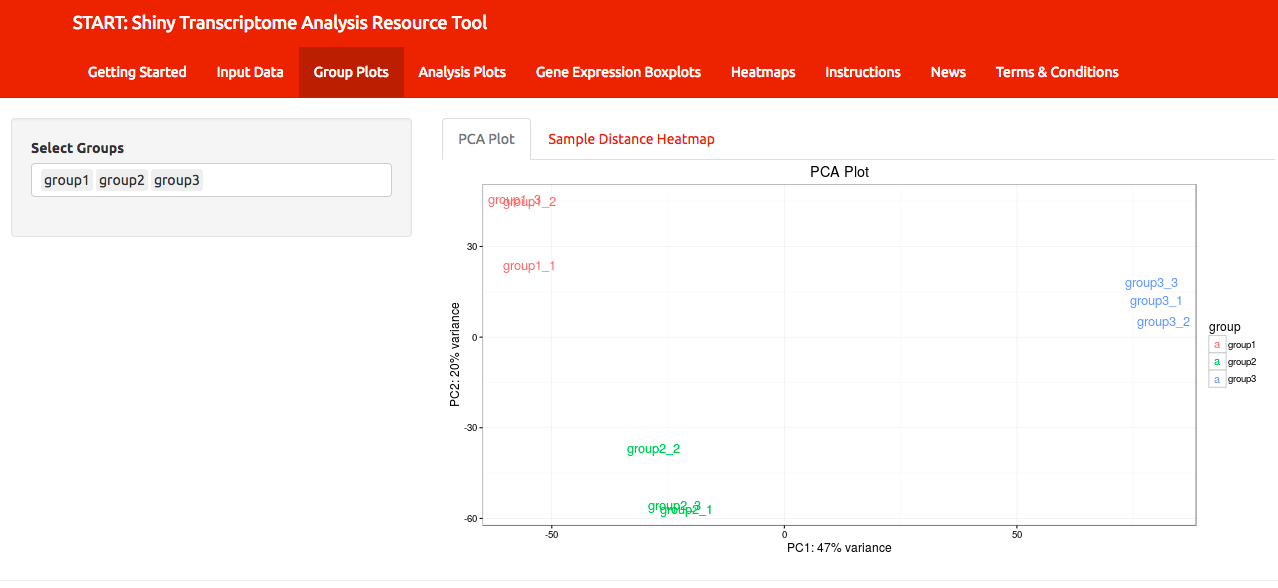
Responsibilities
How do we avoid "data fishing"?
(Food for thought)
Responsibilities
- Are resulting analyses correct?
- Are we encouraging "torturing the data until it speaks"?
- Misuse of p-values?
Responsibilities: Visual inference
Plots = statistics
-- Di Cook's keynote at rstudio::conf 2018
Solution?: Rorschach image tests
Generate null data sets and null plots using permutation and simulation
Can you pick out your data from a line up?
R package nullabor
Too many heatmaps?
Room for misuse, possible solutions:
Documentation
- Use instructions and data inputs wisely.
- Provide examples of when advanced analyses are needed.
- Provide examples of statistical write ups based on app's results.
Analysis
- Avoid too many hypothesis tests.
- Avoid p-values (Bayesian posterior probabilities?).
- With collaborators: stay involved!
Landing page - Where am I?
- Show what the app is for/can do
- Point to instructions and guidelines
Bonus: Jasmine Dumas has a shinyLP package to help!

Instructions, Please
- Extremely difficult.
- Not just a vignette of a package (users may not be coders)
- Written instructions vs. video demos, gif instructions
No one will use it if they don't know how to use it!

Instructions
Tauno Metsalu and Jaak Vilo: "Clustvis"
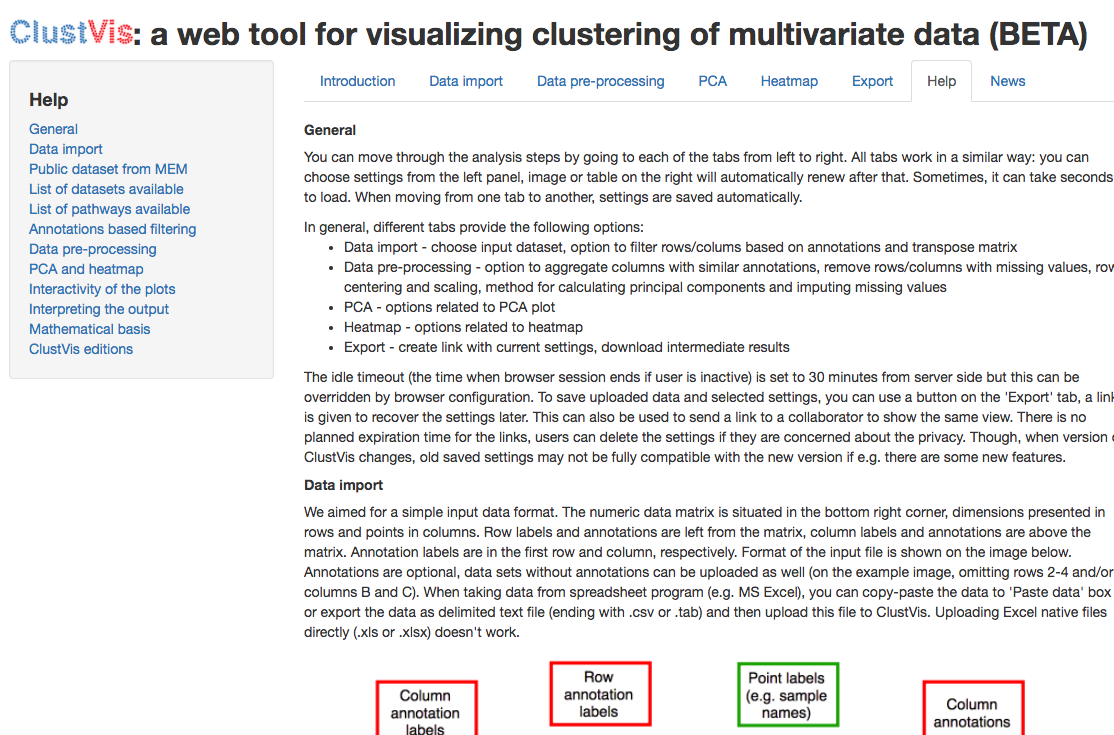
Instructions
Tauno Metsalu and Jaak Vilo: "Clustvis"
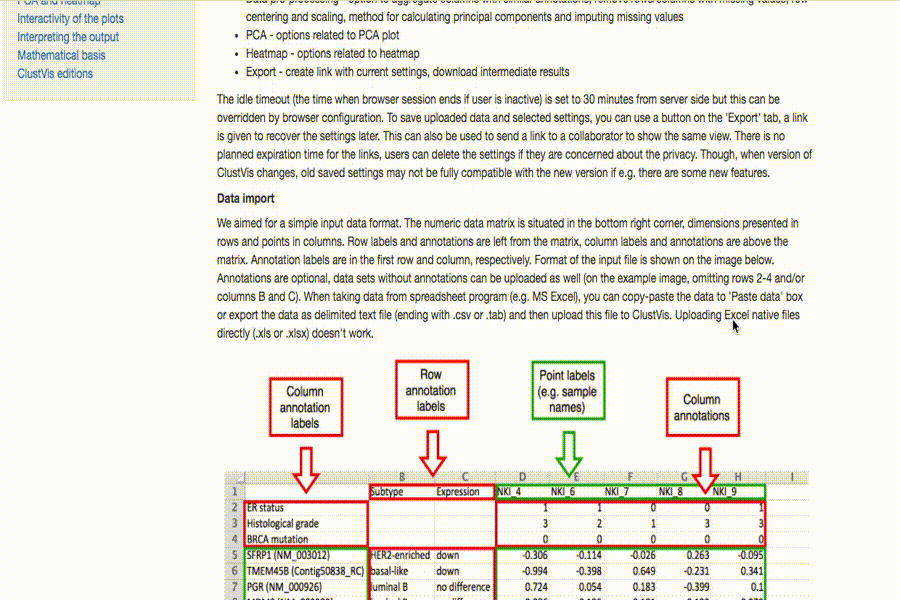
But Does It work?
Debugging Tips
Debugging is notoriously a pain here

Thanks, stack trace:

Did you update a package?
Old fashioned methods work best
Breakpoints and tracing:browser()- I didn't say it was funprint()- every single function/observe statement gets a print
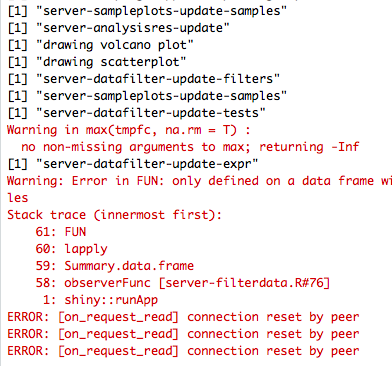
New methods are useful
runApp(..., display.mode="showcase")
But, doesn't show why something broke.
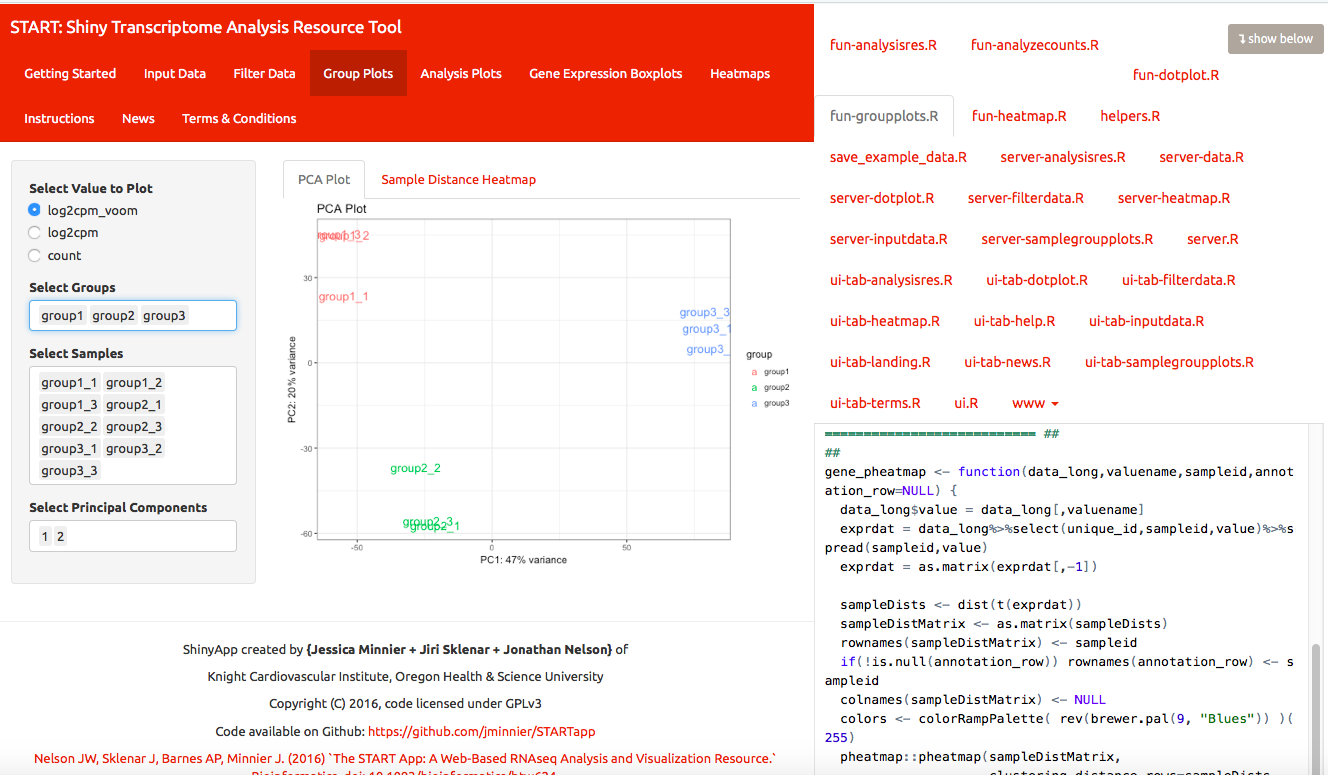
Final Tips
Put on your Software Development Hat!
- Test it first
- Security
- Are users uploading sensitive data?
- Security review of public apps vs commercial version
- Speed: Why so slow?
- Rprofiler in Rstudio
- Reduce start up time
- Newer tools:
futureandpromisespackages for async programming
Thank you! Go forth and shiny!
Contact: @ datapointier, email: minnier-[at]-ohsu.edu
Github: https://github.com/jminnier/STARTapp
Slides available at http://bit.ly/shiny-csp18
Code for slides available at https://github.com/jminnier/talks
Slides created via the R package xaringan by Yihui Xie with the Rladies theme by Alison Hill.
